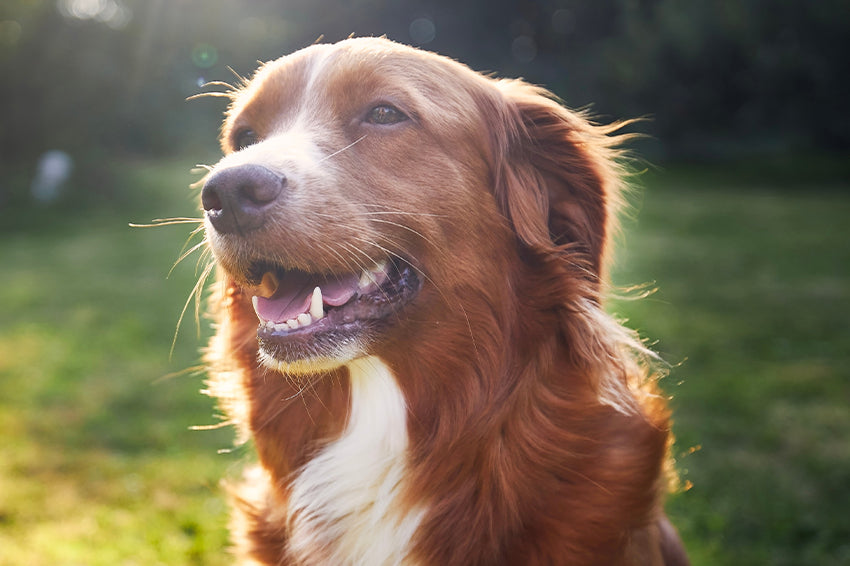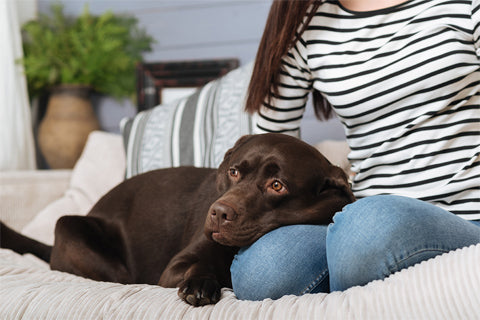Protect Your Pets During Responsible Dog Ownership Month

A whole month to dedicated to doting on our furry friends? Sign us up! September is Responsible Dog Ownership Month, and this is a month-long holiday you better believe we are observing over here at Bug Bite Thing headquarters.
From curious walks outside and the soft belly rubs, to their puppy dog eyes and the unconditional love they give, dogs give us companions like no other. The choice to welcome a dog into one’s home is easy for many of us, though caring for our playful pups is not usually as simple.
If you are considering adopting a dog or just want to shower your pooch with some extra TLC to keep them – as well as the other humans in your life – safe and healthy, we hope you’ll join us in responsible pet ownership.
The American Kennel Club (AKC) observes Responsible Pet Ownership Month each year to remind paw parents of how to best care for their dogs. To join in this vision, here are a few ways we’re showering our playful pups with protection and affection, this month and always. We hope you do the same!
10 Tips for Caring for Your Dog Responsibly

1. Consider your lifestyle and the commitment before adopting a dog.
Having a pet is a lifelong commitment for them. Think through your lifestyle now – and 10 years from now – before bringing a dog into your home. You want to serve as their fur-ever family, so it is important to do your research before jumping into canine caregiving. Consider factors like these: Do you or your loved ones have allergies that could affect pet ownership? Is your home space suitable for the dog breed and size you’re looking at? Are you home enough to give this dog the attention it needs? Could children come into this dog’s life in the future? Will it need regular grooming? Does this particular dog have any extra needs or challenges?

2. Try training your dog.
Training is not about making a dog less of an animal, but rather a safer animal. Positive reinforcement training can support good manners, help them socialize with other animals, interact with humans and make them more comfortable across various situations. It can also be playful and fun for you both! The AKC offers a range of training resources, depending on the type of program or activities you are interested in for your dog.

3. Watch what they eat.
There is a lot of social media chatter around special “clean” meals for dogs and raw food diets, but be wary of these, as no one meal suits every type of dog. “Clean” dog food may lack some of the nutritional benefits your dog requires for a balanced diet, and raw meat can contain to harmful bacteria. Always discuss your dog’s diet with the veterinarian to be safe. Not only should you ensure a safe and healthy diet, but remember to give them frequent access to water and keep an eye on any other non-food your dog ingests. Items around the household and nature can tempt dogs into dangerous feeding situations.

4. Help them build a relationship with your veterinarian.
Going to the vet can be stressful for dogs, but routine well visits are important. Find a caring veterinarian who takes the time to get to know your pet. As long as your dog is healthy, give your pup time to play or take a walk before going inside, bring some treats or a comfort item, and shower them with love to ease the nerves. Once inside the office, discuss your dog’s diet, vaccines, spay/neuter options, age-related tips and any other concerns with your vet.

5. Give your pup a chance to exercise.
No, your pup doesn’t need a Peloton, but they do need regular access to exercise. Whether big or small, if your dog does not have a yard in which they can run free, give them opportunities to play vigorously and be active in a way that suits them best. This could be a daily game of fetch, swim in your pool, or if they’re lucky, visits to a local dog park that includes an agility course.

6. Mind doggie dental care.
Yes, dogs need care for their teeth, too! From dental wipes to toothbrushes, there are tools to support dog dental health. Brushing with dog-safe toothpaste (never use formulas intended for humans) three to four times a week can not only ward off bad breath, but it can lessen the risk for tooth decay, costly dental care and other more serious issues like kidney disease. Keeping a nutritious diet and incorporating special dog chews can also help.

7. Keep your dog free from tick-borne illnesses.
Just like us, dogs can be susceptible to the effects of bug bites and stings, though ticks are especially dangerous to our pets. Check your dog’s skin after time spent outside, with extra attention if you have been in an area prone to ticks. Ticks like to hide in dark, warm spots, so don’t miss peeking at the base of their legs, near their toes and under ears and tails. If you spot a tick, don’t panic, but do have a Bug Bite Thing Tick Remover on hand. This simple two-sided tool includes tweezers and a scoop for easy removal of ticks from both pets and humans. This toxin-free tool can be life-saving when it comes to preventing tick-borne illnesses, so do not wait to order it.

8. Dog-proof your home.
Many parents think about childproofing, but people often don’t realize that dog-proofing is important for your things as well as your pet. Move any breakable or chewable items and always block access to plants that are toxic to dogs—or better yet, remove them entirely. Keep food, medicine and cleaning products closed off and out of reach. Close doors or block off areas that are not suitable for dogs. If you have a new and curious puppy, consider removing or containing electrical cords or other potential hazards. If you have a doggy door for them to go outside, make sure your yard or patio is fenced and safe, too, especially if you are near a road or body of water.

9. I.D. at all times.
It is important your dog always has identification on them, not just during walks. This way, if someone leaves a door open or your dog gets loose at the park, their collar with your name and contact information can support them in getting home safely. If you are open to the idea, microchipping can also quickly get your dog back to should they become lost.

10. Prepare for a dog’s “ruff” moments, too.
For dogs, it’s not always rainbows and butterflies, either. Dogs may be scared of thunderstorms and fireworks or get anxious around kids or new spaces. Be mindful of their fears and be prepared to protect them in these cases, as dogs can stray from home or become aggressive during challenging moments. This can mean moving them to a safe space for a break, playing calming sounds to drown out other noises, or providing a ThunderShirt to ease their anxieties.
These are just a paw’s worth (or two) of tips for responsible pet ownership, though we love talking about our dogs so much that the list could go on forever! Share how you care for your own doggos by tagging @bugbitething on Instagram, Facebook, TikTok, Threads and X (formerly Twitter).
Leave a comment